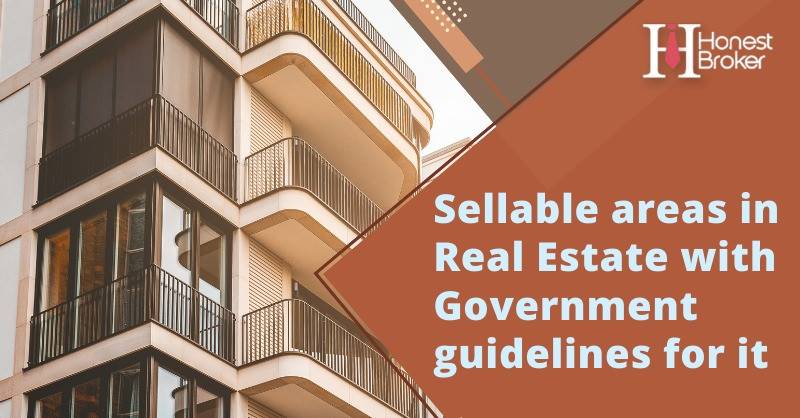 Blog
Blog
Buying a house in recent times is one of the daunting tasks for a home buyer. Families always look for the best location with the house with the best amenities and ambiance. Inspecting the whole house and knowing about the parties involved are the buyer’s rights. In this manner, one can save money and time by spending much money on the house's defects shortly.
What is a sellable area?
According to the RERA (Real Estate Regulatory Authority) rules, the saleable area includes the carpet area and the balcony/veranda /terrace according the RERA (Real Estate Regulatory Authority) rules which is only meant for the Allottee. Based on the saleable area, the price is allocated to the flat. In India, while buying a house, home buyers come across the terms such as carpet area, built-up area, super built-up area, and other terms. So, in this article, the reader can come across these three terms and get an overall idea before buying any property.
Some important terms related to the saleable area
Carpet Area – As the name suggests, it is an area on which the carpet can be laid. It is the floor area, including the area covered by the internal partition walls and excluding the area covered by external walls, balconies, open terraces, play areas, etc. It is also known as the net usable area or space in your home. Below is the formula for calculating carpet area:
Carpet area = (area of bedroom + living room +balconies + toilets)
Built-up area – The area of the housing unit includes the carpet area, the thickness of inner walls, outer walls, and the area of the balcony. It also includes unusable areas like balconies, terraces, flower beds, etc. Hence this part of the house seems to be larger than the carpet area. The formula for arriving at the built-up area is as follows:
Built-up area = Carpet area + area of walls + area of the balcony
Super built-up area – It is also known as the saleable area. It includes the carpet area of the housing unit, external walls, balconies, and terraces and also includes a lift, play areas, gardens, gymnasium, and other areas. Nowadays, the builders sell flats based on carpet area, but before it, a super built-up area was used as the space measuring unit. The cost of the property was lowered using the super-built-up area. The formula for calculating the super built-up area is the following:
Super built-up area = Built up area + proportionate common area
The loading factor- It is the sum of the carpet area and the common areas, including the staircase, lifts, service rooms, common corridors, drivers, and other common facilities. It is the difference between the super-built-up area and the flat's carpet area. The loading factor is less when the residential project does not have any amenities. A loading factor of 1.30 is considered to be sufficient.
Per square foot rate – Builder quotes its rate to determine the flat price. It is based on the saleable area according to the RERA act. It includes the carpet area, additional areas of the apartment, and the building complex such as lobbies, passages, etc.
Floor Area Ratio – It is also known as the Floor Space Index (FSI), which is the proportion of the built-up area allowed on the given plot on the overall area of the plot. This ratio depends on the area, plot size, and the road's width.
Occupancy Certificate – It is also called the Completion Certificate, which certifies that the construction of the project abides by the local rules, regulations, and laws. The Municipal Corporation generally issues this certificate to the owner of the project.
Open Space Ratio – It is a certain percentage of the space which is issued by the local authorities for the construction of the park. It constitutes about 10% of the total land available for the development, which excludes the footprint of the building.
RERA Policy
Real Estate Regulatory authority (RERA) policy has the provisions for punishing the people who do not follow any rules and regulations while selling a property and thereby helping the buyers to seek legal help. RERA act is the recent court verdict that was implemented on 10th March 2016 by Rajya Sabha. It aims to protect house buyers and boosts real estate investments.
Guidelines under the RERA policy:
Under the RERA act, 70% of the money from buyer and investor will be kept in a separate account, and this can be allotted to the builders only for construction purposes.
The builders have to submit the original documents of the property to the legal office authority.
Previously, the developers sell properties based on the super built-up area. But according to this Act, the developers are now instructed to sell the property based on the carpet area.
Within the 5 years of purchase, the builder must rectify any issues faced by the buyer or may face a penalty. The regulator cannot advertise, sell, build, invest or book a plot without registering with the regulator.
The authority will have jurisdiction over the land project when the real estate is registered with RERA Act.
Benefits of RERA:
It standardizes the carpet area.
It reduces the risk of the builders handling multiple projects simultaneously.
It gives the buyer the right to information about the project.
Apart from this, there are other benefits of the RERA Act that include buyers' rights in case of false promises.
Conclusion
The price of a property recently is based on the saleable area or carpet area according to the guidelines of the RERA Act. In this article, the reader gets an overall idea about the related terms while buying a property from the builders and evades the problems on the way while purchasing the property with the help of legal laws and authorities. The reader can also have a brief idea about the RERA act guidelines and their associated benefits.





